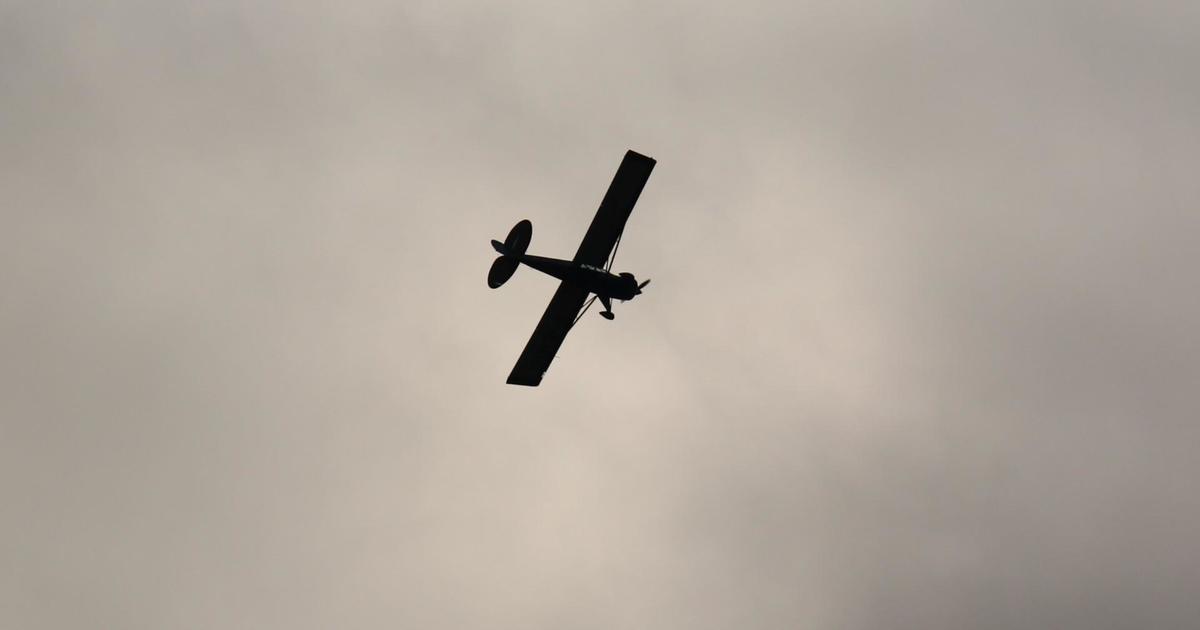NTSB: Pilot Error In 2008 Crash That Killed 8
MINNEAPOLIS (AP) -- A fatigued pilot's poor decision-making caused a 2008 jet crash at a Minnesota airport that killed eight people, including six New Jersey passengers who were in the state on business for an Atlantic City-based casino project, the National Transportation Safety Board ruled Tuesday.
Clark Keefer, the pilot of the East Coast Jets flight, and Dan D'Ambrosio, his co-pilot, were both working on insufficient sleep and displayed poor coordination with one another when the Hawker Beechcraft plane they were flying crashed on July 31, 2008, while trying to land in Owatonna, in southern Minnesota, the NTSB ruled during a hearing in Washington.
The pilots failed to account for a wet runway and 8-knot tailwind when they touched down on the 5,500-foot runway, and they should have applied a braking system a full seven seconds earlier than they did, investigators told the board. The system is called a "lift dump," which slows the plane by extending the flaps and air brakes further than they would go in flight.
Realizing they were running out of runway, the pilots hit the throttles to try to take off again, but it was too late, the investigators said. The plane ran about 1,000 feet off the runway, struck an instrument landing system antenna and hit the ground in a corn field about 2,000 feet from the end of the runway. Had the pilots hit the lift dump right after touchdown, or landed into the wind, the plane probably could have stopped safely on the runway, they said.
"This accident reminds us that aviation is an unforgiving environment," NTSB Chairman Deborah A.P. Hersman said at the start of the hearing. "No detail is too small to be overlooked. ... The small things matter and in this case they accumulated to result in tragedy."
Hersman added: "The takeaway from this is that attempting to get airborne again after landing is a difficult maneuver and a decision that should not be taken lightly."
None of the eight people on board could have survived the crash, the board determined.
After hearing the investigators' testimony, Hersman said that if the pilot instead had kept trying to stop, the plane might have overshot the runway by 100 to 300 feet, but everyone aboard probably would have survived.
"It was a risky, impulsive decision," NTSB investigator Malcolm Brenner told the board. "It was made under high stress."
Both pilots were trying to function on about five hours of sleep and the co-pilot was already short on sleep from the night before, Brenner said. He said that Keefer, of Bethlehem, Pa., may have had an undiagnosed sleep disorder, given that he would usually sleep longer than eight hours at night, while D'Ambrosio, of Hellertown, Pa., apparently had insomnia.
"We believe both pilots were not at the top of their game," Brenner said.
While the first officer took an Ambien sleeping pill the night before the crash, the short-acting medication likely had worn off by the time of the crash and did not contribute to his fatigue, Brenner said. But he also said the first officer did not have a prescription for the sleep aid and got the pill from his girlfriend.
Another investigator, Roger Cox, said cockpit voice recordings made it clear the captain was "impatient to land" but Brenner said it wasn't clear why. They were landing a little early and were scheduled to spend two hours on the ground in Owatonna, which would have given them plenty of time for refueling.
And while the pilots both had "excellent ratings as individuals," Cox said, they "functioned less effectively as a crew." He said the evidence indicates the pilot made all the decisions, and that they didn't properly follow their approach and landing checklists.
"Because the first officer was not in the loop he did not have the opportunity to intervene and save this airplane," Cox said.
The thunderstorms that moved through the area shortly before the crash contributed primarily because they left the runway wet, the investigators said. And had the pilots gotten an up-to-date weather briefing en route, rather than relying on a forecast several hours old that had predicted better weather in the area, they might have been better prepared. The instruments on board should have made it clear to them that the 8-knot headwind they were expecting on approach had turned into a tailwind.
The six passengers were working on the Revel Entertainment casino project in Atlantic City. They boarded the plane at Atlantic City International Airport bound for a meeting at Viracon Inc., an Owatonna, Minn. glass company, where they planned to discuss the design and purchase of glass for the casino. Construction on Revel was halted a few months after the crash when the economy soured and Revel Entertainment ran out of money with only the exterior finished. The $2 billion project resumed last month when the company secured new financing to complete it.
Killed in the crash were passengers Karen Sandland, 44, of Galloway, N.J.; Marc Rosenberg, 52, of Margate City, N.J., Alan Barnett, 42, of Absecon, N.J.; Tony Craig, 50, of Brigantine, N.J.; Chris Daul, 44, of Northfield, N.J.; and Lawrence "Chip" Merrigan, 62, of Absecon, N.J.
Sandland was a project manager for Tishman Construction Corp. who was working on the Revel project. Craig, Daul and Merrigan were all Revel executives. Rosenberg and Barnett were executives for APG International, a Glassboro, N.J. company that specializes in glass facades.
(© Copyright 2011 The Associated Press. All Rights Reserved. This material may not be published, broadcast, rewritten or redistributed.)



